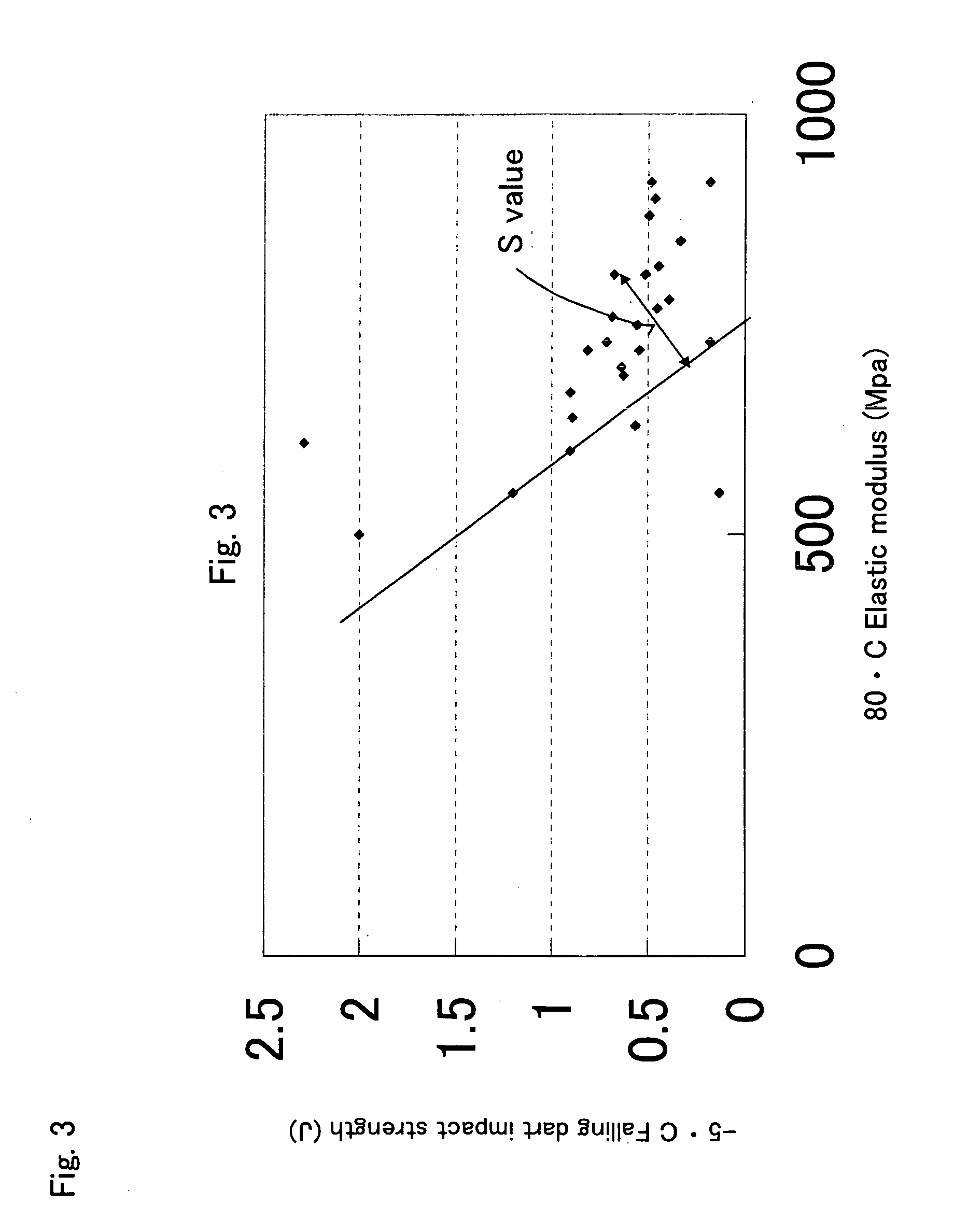Resin composition containing inorganic nucleating agent, molding thereof and process for producing the same
a technology of inorganic nucleating agent and composition, which is applied in the direction of synthetic resin layered products, adhesives, film/foil adhesives, etc., can solve the problems of compositions that pose an essential problem in terms of insufficient impact resistance, excessive specific weight, and odor of compositions that exceed an acceptable level, so as to minimize an increase in cost, excellent impact resistance, and high elastic modulus
- Summary
- Abstract
- Description
- Claims
- Application Information
AI Technical Summary
Benefits of technology
Problems solved by technology
Method used
Image
Examples
examples
[0204] The present invention will next be described in more detail by way of Examples, which should not be construed as limiting the invention thereto.
[0205] Physical properties of each of the structures formed in the below-described Examples were measured through the following methods.
[0206] Specific weight was measured through the water replacement method according to JIS. K7112 by means of an automatic gravimeter (product of Toyo Seiki Seisaku-Sho, Ltd.).
[0207] Storage modulus of a test piece was measured until the temperature of the test piece reached its melting temperature according to JIS K7198 by means of a solid viscoelasticity measuring apparatus [DMS6100, product of Seiko Instruments Inc.] with a 1-Hz stretching mode while temperature was raised from 10° C. to 23° C., 80° C., and 140° C. at 10° C. / minute.
[0208] Falling dart impact strength was measured according to JIS K6921 by means of HTM-1 (product of Shimadzu Corporation) with an impact dart of 13.7 mmφ at −5° C. ...
examples 9 to 12
[0240] A peelability-imparting layer and a surface layer were successively provided, through coextrusion, on one surface of the multi-layer structure obtained in Example 6, to thereby form a multi-layer structure (see FIG. 1). The thus-formed structure was subjected to heat molding by means of vacuum pressure forming, to thereby form a container (inner diameter: 120 mm, depth: 40 mm) (see FIG. 2, the multi-layer structure is not illustrated).
[0241] In each of these Examples, the surface layer was formed of R-PP so as to attain a thickness of 80 μm.
[0242] Example 9: The peelability-imparting layer was formed of a HDPE2 / LDPE (80 / 20 mass %) blend so as to attain a thickness of 10 μm.
[0243] Example 10: The peelability-imparting layer was formed of H-PP / LDPE (50 / 50 mass %) blend so as to attain a thickness of 20 μm.
[0244] Example 11: The peelability-imparting layer was formed of the same material as that employed in Example 9 so as to attain a thickness of 40 μm.
[0245] Example 12: T...
PUM
| Property | Measurement | Unit |
|---|---|---|
| mass % | aaaaa | aaaaa |
| mass % | aaaaa | aaaaa |
| density | aaaaa | aaaaa |
Abstract
Description
Claims
Application Information
 Login to View More
Login to View More - R&D
- Intellectual Property
- Life Sciences
- Materials
- Tech Scout
- Unparalleled Data Quality
- Higher Quality Content
- 60% Fewer Hallucinations
Browse by: Latest US Patents, China's latest patents, Technical Efficacy Thesaurus, Application Domain, Technology Topic, Popular Technical Reports.
© 2025 PatSnap. All rights reserved.Legal|Privacy policy|Modern Slavery Act Transparency Statement|Sitemap|About US| Contact US: help@patsnap.com



